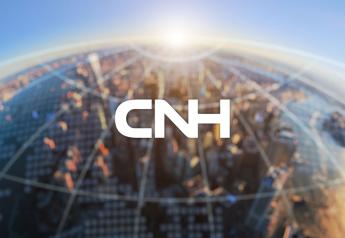Common Alfalfa Cutting Questions

The hay cutting season for Midwest alfalfa producers is quickly approaching, and the weather is finally heating up. There are some common questions that usually come up prior to the harvest season, and Michigan State University Extension will answer some of these questions using a “normal” growing season as a guide to harvesting this year’s crop. (This does not take into consideration the reduced lignin alfalfas available on the market.)
When should I cut first cutting alfalfa for dairy cows?
This is the most important question since first cutting alfalfa is the largest and most critical cutting of the year and sets the stage for all subsequent cuttings. MSU Extension’s current recommendation for producers using bunk silos is to begin cutting at 680 growing degree-days (GDD) corresponding to a value of about 38 percent neutral detergent fiber (NDF). Using GDD is an important tool that should only be used for first cutting.
It’s important to take into account how long it may take you to harvest your alfalfa. The warmer the temperatures at harvest time, the faster the alfalfa will mature. If your alfalfa acres are all within a 5-mile radius, it makes sense they will mature close to the same time, so plan accordingly and remember what’s harvested will end up being an average of all your acres.
To get information about the Alfalfa Cutting Model and current GDD from a weather station near you, go to Michigan State University Enviroweather.
Should I cut early for high neutral detergent fiber digestibility (NDFD) and just add some straw for fiber in the total mixed ration (TMR) if needed?
Realize that if you are cutting alfalfa earlier there will be a yield reduction and possibly a reduction in stand longevity. First cutting alfalfa changes rapidly at this time, and weather delays will decrease forage quality. Maturity at harvest has the greatest influence on NDFD. As forage matures, digestibility can decline more than 40 percentage units (percent of NDF).
Should I cut every 26-30 days after first cutting for dairy cows?
Cutting alfalfa to meet the needs of the livestock being fed should be the emphasis for this answer. High producing dairy cows require high quality feed whereas growing heifers and beef cows will have lower requirements. To answer the question for the high producing dairy cow, if there are no problems with insects, such as potato leafhopper, and the alfalfa has reached the maturity and fiber levels you desire, there’s no reason to delay cutting. There’s always a tradeoff between tons of dry matter (DM) and quality (see graph).

The changing values for forage quality compared to yield. Courtesy of Kim Cassida, MSU.
Should I let the alfalfa blossom at least once during the summer?
If your goal is to keep the alfalfa in rotation as long as possible, then the plants should have the opportunity to reach one-tenth blossom at least once during the growing season. This is the point when the plants reach a full level of carbohydrate reserves in the roots.
Many times if the alfalfa stand has been damaged during winter and it has been slow to respond to warm weather, it is a good idea to let the plants build their root carbohydrate levels and reach one-tenth blossom at least once during the growing season. The best cutting to do this would be either second or third rather than first cutting when we have the highest yield.
Should I never let the plants blossom after first cutting?
This is similar to the earlier question and depends on the goals for the farm. If you are comfortable with a shorter rotation for your alfalfa fields, then I would recommend you cut and not wait for a blossom before cutting.
Should I take the fourth or fifth cutting in a good year?
If you need the forage and feel it’s necessary for adequate inventory, then take the cutting. If you are comfortable with your inventory of forage, leaving the cutting will not hurt the stand.
Should I take a cutting in September?
It depends. Research based on GDDs suggests that if there are not enough GDDs to allow adequate carbohydrate reserve recovery for the plant to survive winter, then you should not take a cutting after mid-September. Southern Michigan would have a better chance of survival with more GDDs than a more northern location such as the Upper Peninsula.
Should I take the last cutting in October?
The previous questions and answers all have a bearing on how to answer this question. After a killing frost, there can be a last cutting taken from the plants; however, it’s advised to cut high so there is an opportunity to help keep snow cover for better insulation of the crown. Normally, the yields are quite low for this last cutting and the tradeoff for removal of this forage will be increased winterkill and decreased first cutting yield the next spring.







